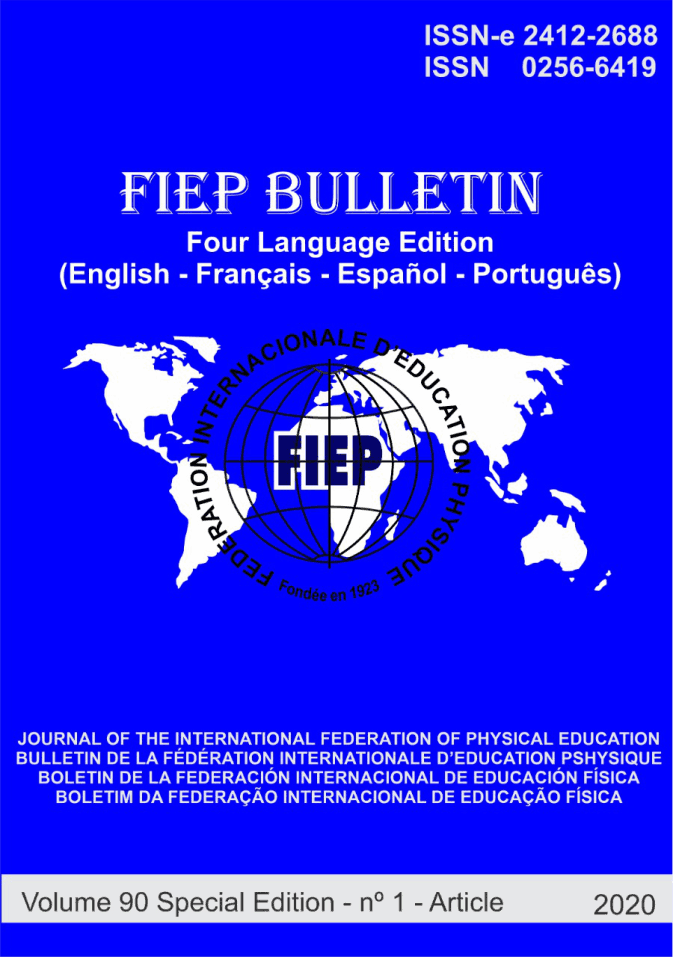MEDIUM AND LOW FREQUENCY ELECTROTHERAPY IN THE MUSCLE STRENGTH
Keywords:
Electric stimulation therapy, muscular strength, physiotherapy modalitiesAbstract
Introduction: Neuromuscular electrical stimulation (NMES) has been used as one of the pillars of the therapeutic modalities for the gain of muscle strength. Objective: To compare the strength gain in the elbow flexor muscles in women after the use of Neuromuscular Electrical Stimulation (NMES) of low and medium frequency. Materials and Methods: 15 women were selected, with normal body mass index (BMI), previously healthy, sedentary and aging from 18 to 27 years old. They were randomically separated in 2 groups, Russian current (n=8) and low frequency (FES) group (n=7), with the stimulation only in the weakest arm of the participants. FES frequency was 50Hz, pulse duration of 200 microseconds and Russian current, medium frequency alternating current of 2,500 Hz, was modulated to 50Hz, duty cycle of 50%, for both methods the ramp-up and ramp-down was 2 seconds, 20 seconds of ON and OFF time, for 20 minutes in the triceps brachii, for 5 weeks, with intensity enough to promote a muscle contraction visible and tolerable. Strength measurements were made with a portable dynamometer before the start of the NMES protocol and after the end of it. Results: we used the paired T test and the T Student test with the significance level set to p<0.05. There was an increase of muscular strength in both arms for the same group, with the average gain in the FES stimulation of 7.2 pounds and in the Russian current stimulation of 14.5 pounds, with intragroup and inter group statistic significance. Conclusion: The Russian current stimulation was more efficient in promoting strength muscular gains when compared to FES, although both low and medium frequency currents were able to promote significant improvements but the groups were different as to the force at the time pre-stimulation.Downloads
Download data is not yet available.
Downloads
Issue
Section
TRABALHOS PUBLICADOS
License
Autores que publicam nesta revista concordam com os seguintes termos:- Autores mantém os direitos autorais e concedem à revista o direito de primeira publicação, com o trabalho simultaneamente licenciado sob a Licença Creative Commons Attribution que permite o compartilhamento do trabalho com reconhecimento da autoria e publicação inicial nesta revista.
- Autores têm autorização para assumir contratos adicionais separadamente, para distribuição não-exclusiva da versão do trabalho publicada nesta revista (ex.: publicar em repositório institucional ou como capítulo de livro), com reconhecimento de autoria e publicação inicial nesta revista.
- Autores têm permissão e são estimulados a publicar e distribuir seu trabalho online (ex.: em repositórios institucionais ou na sua página pessoal) a qualquer ponto antes ou durante o processo editorial, já que isso pode gerar alterações produtivas, bem como aumentar o impacto e a citação do trabalho publicado (Veja O Efeito do Acesso Livre).
How to Cite
MEDIUM AND LOW FREQUENCY ELECTROTHERAPY IN THE MUSCLE STRENGTH. (2020). Fiep Bulletin - Online, 90(1). https://ojs.fiepbulletin.net/fiepbulletin/article/view/6237










